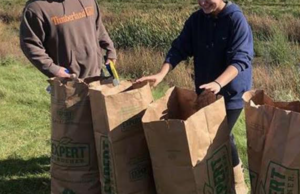Iowa representatives should adopt requested water policy standards
By Willa Simmet 2008
I wake up. I feel the devil has taken hostage of my insides. My stomach lurches and I throw up. I look around at the other girls in my tent and think about what fun we had had earlier in the day, canoeing and swimming in the northeastern Iowa lake. Then I remember how sick I feel — like 20 wheels just keep spinning, taking everything along with them, and refusing to stop. It’s horrible. Then I realize what may have caused the monster to invade my unfortunate stomach. I think back to the sign at the edge of the lake, disregarded by all of us, warning of harmful bacteria in the water.
According to a 1995 Iowa State University survey, out of all the issues concerning our environment, nine out of 10 Iowans are most concerned with the quality of our water. These 90 percent will be sad to know that Iowa’s streams are among the most fertilizer-polluted in the world, according to ISU research. Yes, I did say world.
A major reason why these lake and streams are so polluted is the livestock and field runoff. This is due to soil erosion. Rainwater washes the soil and everything on the soil including fertilizer, manure and pesticides into lakes and streams. Fertilizer, when applied in the fall, can even wash away before crops are planted the spring. Iowa has had several hundred manure spills in the past decade, which can be harmful to our drinking water. In urban areas like Cedar Falls and Waterloo, a heavy rainfall washes lawn fertilizers and chemicals, oil and other debris into bodies of water. If it’s on the streets, its new home will soon be in the water.
A prim example of this is the creek that runs through my backyard, Dry Run Creek. This is a stream I enjoy spending my summers sending many homemade boats down and wading though. I was certainly let down when I found out my summertime oasis was on the government’s list of impaired waterways. Tests on various parts of the creek showed levels of E. coli bacteria five or more times what is considered a safe level. Come summer, I’m sure my neighbor kids and their parents will be glad to hear about that one.
Luckily for my fellow creek players and myself, Black Hawk County received a grant for $5568,000 from the Iowa Watershed Improvement Review Board to improve water quality through education and soil management practices.
If we want to have clan lakes, rivers and streams, we need to have higher water-quality standards. Last week Iowa’s Environmental Commission approved new limits on bacteria, ammonia and other pollutants in streams, which previously were not fully protected as required by the
Federal Clean Water Act. Some legislators want to challenge the EPC’s actions. Why do they want to do this? They think it will cost too much, and they think the EPC overstepped their bounds.
But what about in 20 years when we have to start scrounging for our clean water? Failure to keep our waters clean will cost far more in the long run. If you want clean water, tell legislators to leave the EPC regulations alone and let’s get on with the work of cleaning up our lakes, rivers and streams.









You must be logged in to post a comment Login